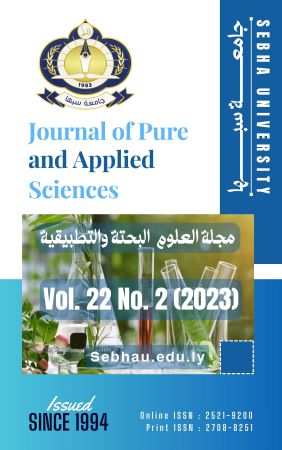The Effect of Using Different Concentrations of Nitric Acid and Potassium Nitrate on Stimulating Germination of Two Barley Cultivars
Abstract
The results showed that there were significant differences between the two cultivars in some studied traits. Alriyhan cultivar gave the highest values for germination speed, germination ratio, germination strength for the first tool (germination speed), and germination strength for the second tool (germination ratio). While there were no significant differences in root length, wet weight between the two cultivars. The T10 and T6 treatment gave the highest values in germination speed, germination ratio, feather length, dry weight, germination strength of the first tool (germination speed), germination strength of the second tool (germination ratio) when were compared to the rest of the treatments. While there were no significant differences between treatments in root length, feather length, wet weight and dry weight. A laboratory experiment was conducted at the Soil and Fertilization Laboratory of the Soil and Water Department - Faculty of Agriculture - Sebha University. During the winter season 2019/2020, by using a complete random design (CRD) with three replicates to the applied two barley cultivars (Napola, Alriyhan) to the effect of soaking in eleven treatments (T1 without soaking, T2 distilled water soaking 3 hours, T3 distilled water soaking 6 hours, KNO3 T4 5% soak 3 hours, KNO3 T5 10% soak 3 hours, KNO3 T6 5% soak 6 hours, KNO3 T7 10% soak 6 hours, HNO3 T8 0.05 standard soak 3 hours, HNO3 T9 0.1 standard soak 3 hours, HNO3 T10 0.05 standard soaking 6 hours, HNO3 T11 0.1 standard soaking 6 hours).
Full text article
Authors
Copyright (c) 2023 Journal of Pure & Applied Sciences

This work is licensed under a Creative Commons Attribution 4.0 International License.
In a brief statement, the rights relate to the publication and distribution of research published in the journal of the University of Sebha where authors who have published their articles in the journal of the university of Sebha should how they can use or distribute their articles. They reserve all their rights to the published works, such as (but not limited to) the following rights:
- Copyright and other property rights related to the article, such as patent rights.
- Research published in the journal of the University of Sebha and used in its future works, including lectures and books, the right to reproduce articles for their own purposes, and the right to self-archive their articles.
- The right to enter a separate article, or for a non-exclusive distribution of their article with an acknowledgment of its initial publication in the journal of Sebha University.
Privacy Statement The names and e-mail addresses entered on the Sabha University Journal site will be used for the aforementioned purposes only and for which they were used.





